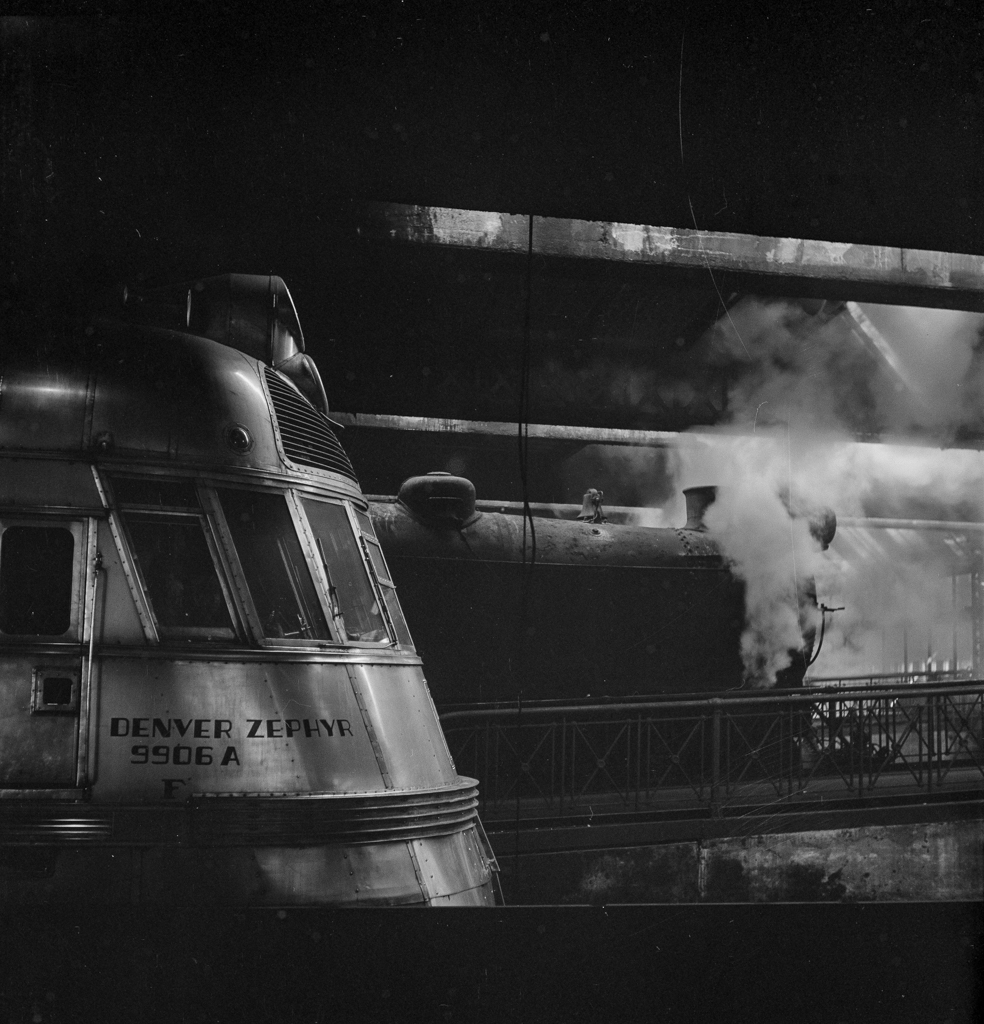

A high speed streamlined stainless steel express train – is there anything more effortlessly Art Deco cool than this? Dating back to 1934, the Pioneer Zephyr trains must have seemed to have driven straight off the pages of a science fiction comic when compared to the typical steam locomotive of the day. 
The power source was not as futuristic from a technological standpoint, but pointed to the future a – diesel engine that provided current to traction motors in the bogies. While this type of power unit had been tried before, it had not been used in anything as ambitious as this.

At this time, diesel power was pretty much confined to shunting locos on British railways at the time. Perhaps due to the nations vast coal reserves and relative lack of oil in the UK (offshore reserves notwithstanding) diesel traction was fairly slow to take off on British shores. While there was some small scale experiments in diesel and petrol rail cars, as well as the electrification done by the Southern Railway, it was only really post war with the LMS D16 diesel locomotives was a new era signalled in Britain. Continental Europe was far ahead – Germany’s ‘Flying Hamburger‘ entered service in 1934
I’m no expert on diesel locomotives, so this is specualtion on my part, but I wonder whether the dieselisation of American railways started earlier than in Britain due to the nations oil reserves. While the country had huge coal reserves as well, the benefits of the internal combustion engine were well known, plus the huge refining capacity available maybe made it inevitable that diesel power would take over once the actual technology of diesel engines was perfected. While there were numerous experiments with diesel power in America, the Pioneer Zephyr was something of a trailblazer for the concept.
And maybe because of the greater number of railway companies, who didn’t all have their own locomotive building facilities, the importance of the independent locomotive builder was greater in America than in Britain (not that Britain lacked independent builders, but for the most part, their products tended to be either for industrial use or for export rather than domestic mainline use). Consequently, there was probably more of a market for innovations like diesel power than in Europe.
Either way, the Burlington Zephyr was certainly a success, the units ran until 1960. Other streamlined diesels quickly followed (with varying degrees of success) but the Zephyr made the headlines and stayed in them with publicity stunts such as the dawn to dusk run, and film appearances.

I love this film noir style photograph taken in Chicago Union station of the Denver Zephyr in 1943. It was taken by Jack Delano who took a lot of the photos I’ve posted before of the wartime American railways. A professional photographer, he later went on to become a film director and he had a great eye for light.
https://en.wikipedia.org/wiki/Pioneer_Zephyr
http://www.pbs.org/wgbh/americanexperience/features/general-article/streamliners-burlington/
“Art Deco cool” is right!
LikeLiked by 1 person